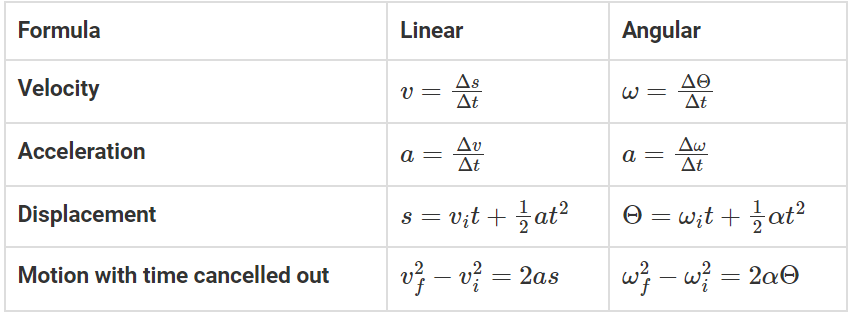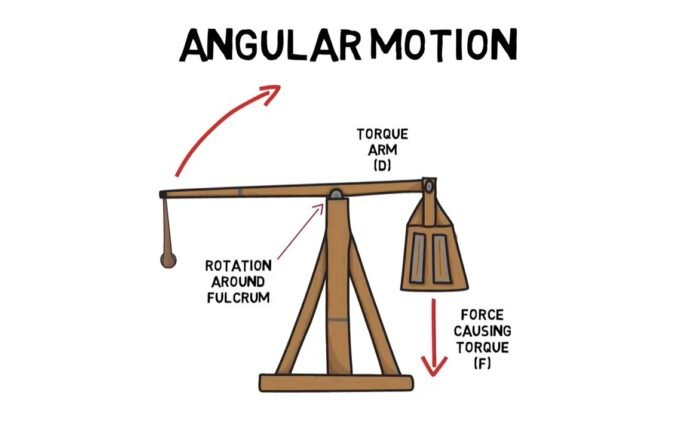Angular Motion:
Angular motion is defined as the motion of a body about a fixed point or fixed axis. It is equal to the angle passed over at the point or axis by a line drawn to the body.
If each particle of a rigid body moves in a circle then the motion executed by the rigid body is called the Rotational motion or angular motion.The motion of a body about a fixed point or fixed axis. It is equal to the angle passed over at the point or axis by a line drawn to the body. We use ‘ω’ to indicate angular velocity. Angular velocity is the number of radians covered per second.
The center of the circle of the body lies on a straight line and is called the axis of rotation.
where Δθ is the angular rotation in time Δt.
Here an angular rotation that is Δθ takes place in a time Δt. The greater the rotation angles in a given amount of time the greater the angular velocity is there. The units which are for angular velocity are radians per second which are rad/s.
Relationship between Linear and Angular Motion
Here are a few variable substitutions you can make to get the angular motion formulas:
- Displacement – In linear motion, we use ‘s’ to quantify the linear distance travelled. In angular motion, we use ‘θ’ for the same to quantify the angular distance, and it is measured in radians.
- Velocity – In linear motion, we use ‘v’ to denote velocity while in angular motion, we use ‘ω’ to indicate angular velocity. Angular velocity is the number of radians covered per second.
- Acceleration – We use ‘a’ to denote linear acceleration, while we use ‘α’ to mean angular acceleration. The unit of angular acceleration is radians per second2.
- Now that we have discussed the variations in linear and angular motions, let us look at the formulas for both linear and angular motion.

Types and explanation of different angular motion:
- Particles Which are Three Dimension:In the space of three-dimensional particles, we again have the position vector that is r of a moving particle. Here if we notice as there are two directions that are perpendicular in nature to any plane which is an additional condition is necessary to uniquely specify the direction of the angular velocity which is conventionally the rule of right-hand used.
- Vector of angular velocity for the rigid body:If you have a rotating frame of three unit vectors then the coordinates of all the three should have the same angular speed at each of the points. In such frames, each vector can be regarded as the moving particle having a constant scalar radius. The rotating frame always tends to appear within the context of rigid bodies and specialized custom tools have been developed for this.
Recommended Articles:
Angular Momentum and Its Conservation, Applications, and Examples
What is the Angular Momentum of an electron
Angular Momentum About Fixed Axis
Angular Displacement: Introduction, Motion, and Formula
Angular Acceleration – Formula, Definition, Application, and Factors
The relationship between linear and angular speed is given by the formula: Angular velocity is defined as the number of radians covered per second. Angular Motion FAQs
What is the relationship between linear and angular speed?
r=vWhat is angular velocity?
